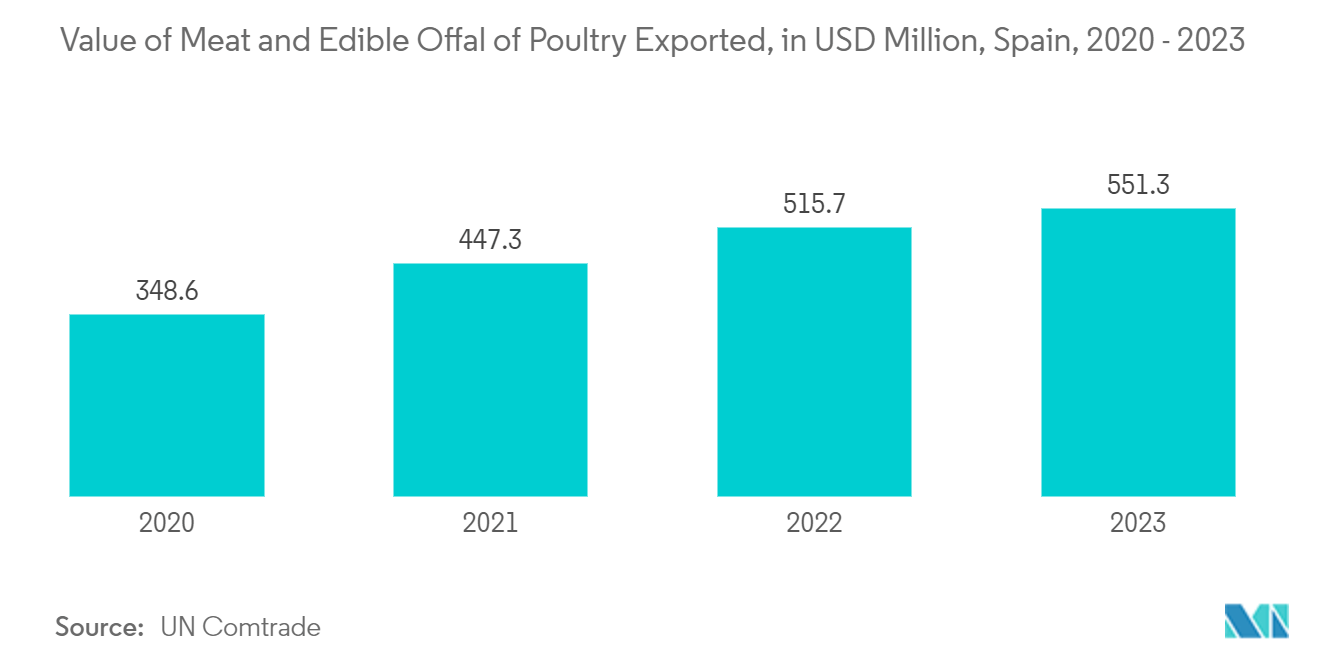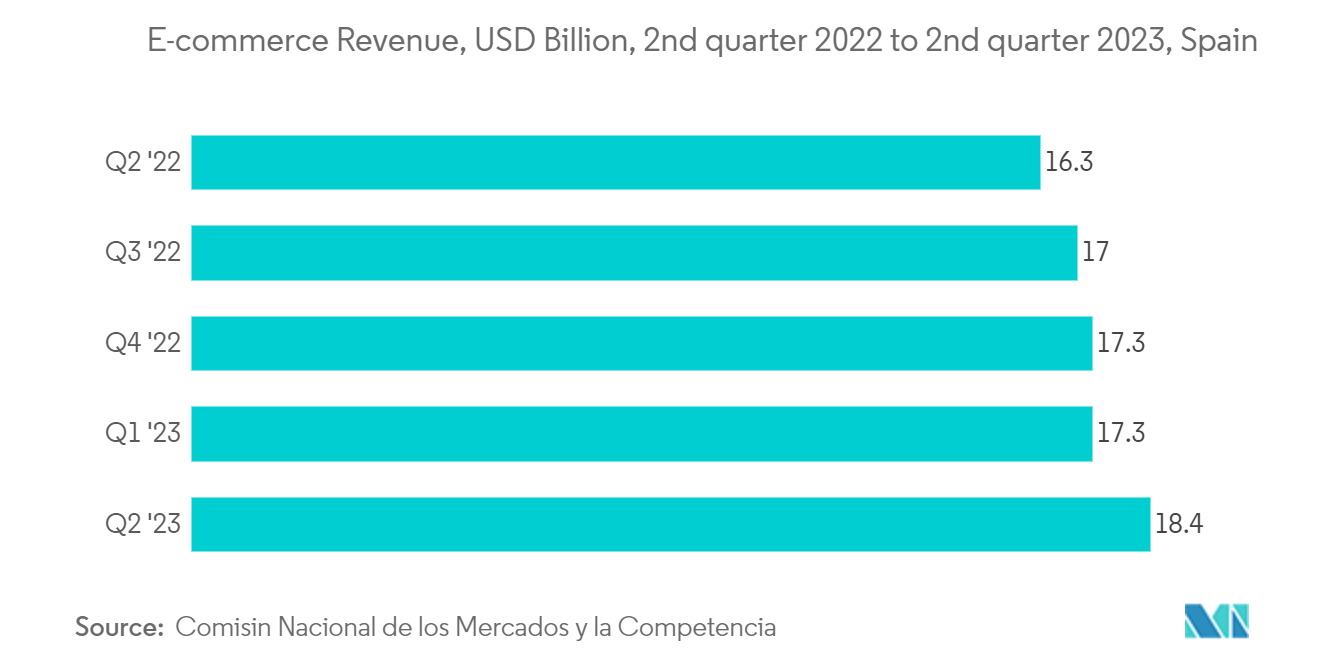Market Trends of Spain Plastic Packaging Films Industry
Meat, Poultry, And Seafood segment to Hold Significant Market Share
- Plastic film packaging, available in pouches, bags, films, and wraps, offers versatility in accommodating diverse cuts, portion sizes, and packaging formats in the meat, poultry, and fish industries. This versatility ensures efficient packaging, spanning from whole cuts to processed items like sausages and fillets. In addition, plastic film packaging provides benefits such as extended shelf life, improved product visibility, and enhanced protection against contamination and spoilage, making it a preferred choice for manufacturers and consumers.
- Spain has witnessed a notable surge in beef, pork, poultry, and seafood consumption and production in recent years. This uptick is fueled by a rising demand for packaging that is both consumer-friendly and enhances product protection. Consequently, meat, poultry, and seafood packaging has emerged as a cost-effective and practical solution. Forecasts suggest a rise in plastic packaging sales in the coming years. This uptick is primarily attributed to heightened hygiene awareness and the necessity for packaging solutions that prolong shelf life and maintain the inherent qualities of meat and poultry, which are crucial for both domestic consumption and export markets.
- In 2023, Spain saw a notable rise in the export value of poultry meat and edible offal, increasing from USD 515.7 million to USD 551.3 million. This surge in demand is driving a trend toward utilizing specialized plastic films for meat packaging, ensuring freshness during transit. These plastic films are designed to provide a barrier against contaminants and extend the shelf life of the meat, making them essential for maintaining quality during transportation and storage. In addition, the increased export value reflects a growing global appetite for Spanish poultry products, which in turn necessitates advancements in packaging technology to meet international standards and consumer expectations.
- Spain ranks third in Europe in terms of fish and meat consumption, trailing only Portugal and Norway. A Seafood Council survey reveals that 70% of Spaniards enjoy fish twice weekly, with 90% having it at least once. Hake, salmon, cod, sole, sea bass, tuna, and swordfish are favored fish. On the meat front, Spain's Ministry of Agriculture reports an average per capita meat consumption of 1349 grams daily. Poultry leads the meat choices, with an average daily consumption of 38 grams per person, closely followed by pork and beef. In addition, Spaniards consume an average of 32 grams of processed meat daily, with cooked or cured ham being the favorite. This rising consumption trend presents opportunities for manufacturers to invest in innovative plastic film packaging that complies with government regulations.

Polyethylene Segment Expected to Hold Significant Share in the Market
- Polyethylene, renowned for its flexibility, high moisture barrier, and durability, also boasts exceptional performance in low temperatures. Its standout feature lies in its innate ability to seal without needing extra coatings. Whether utilized independently or in conjunction with other materials, polyethylene creates a formidable barrier. Furthermore, its eco-friendly attributes garner heightened interest among packaging film manufacturers, effectively addressing sustainability concerns.
- Polyethylene (PE) emerged as the leading plastic material in Spain, valued for its versatile physical properties. Its popularity stems from its cost-effective production, distinguishing it from its plastic counterparts. Polyethylene has the lowest softening point among primary packaging plastics, reducing energy consumption. Complementing PE, LDPE, and LLDPE are prominent in the flexible packaging. Primarily used in crafting plastic bags, films, and geomembranes, polyethylene is favored for its lightweight composition, partial crystallinity, and standout attributes like chemical resistance, minimal moisture absorption, and sound insulation.
- Product Visibility in Transparent Packaging Drives Demand for Polythene Films. Transparent packaging is a pivotal factor in consumer purchasing decisions. It attracts buyers across diverse industries, fosters trust, and boosts sales. Consumers who can view the product before purchase are more inclined to make a purchase. Consequently, manufacturers of polyethylene barrier films are now emphasizing transparency to secure a more significant market share.
- Polyethylene packaging, in the form of wraps, pouches, and bags, has emerged as a significant choice for preserving food freshness, especially with the rise of e-commerce in Spain. This type of packaging helps keep food fresh for extended periods without spoilage, which is crucial for maintaining quality during transportation and delivery. The country's e-commerce revenue surged from USD 16.3 billion in Q2 2022 to USD 18.4 billion in Q2 2023. This trend underscores a burgeoning market for plastic film packaging, which plays a vital role in ensuring that food products remain fresh and intact during deliveries. As e-commerce continues to grow, the demand for effective packaging solutions like polyethylene wraps, pouches, and bags is expected to increase, driving further innovation and development in the packaging industry.


